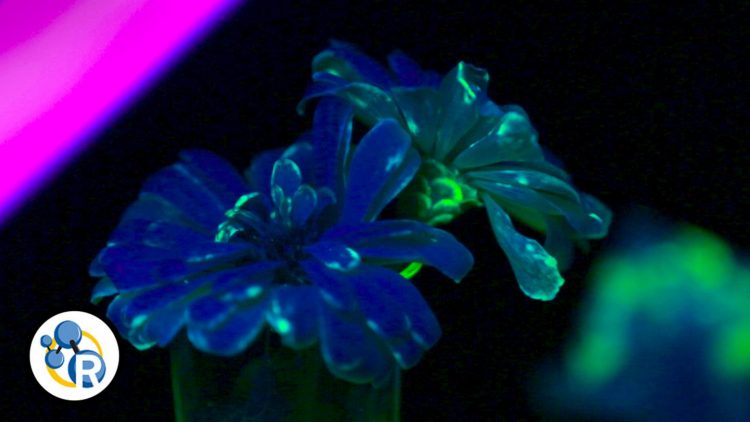How to grow a glowing flower: The chemistry of fluorescence (video)

If you have ever seen objects 'glow' under a black light, you're familiar with fluorescence. But have you ever wondered why some materials fluoresce while others don't? Reactions explains how fluorescence works, along with its importance for applications in forensics, medicine and nanotech. It's all here in these videos: How To Grow A Fluorescent Flower: https://youtu.be/c3VVUsuowNM Fluorescence Is Awesome (Here Is How It Works): https://youtu.be/FZ9E5hZMbCA Credit: The American Chemical Society
Reactions explains how fluorescence works, along with its importance for applications in forensics, medicine and nanotech. This week, we're also throwing in a bonus video on how to grow a fluorescent flower for that special someone. It's all here in these videos:
How To Grow A Fluorescent Flower: https:/
Fluorescence Is Awesome (Here Is How It Works): https:/
###
Subscribe to the series at http://bit.
The American Chemical Society is a nonprofit organization chartered by the U.S. Congress. With more than 158,000 members, ACS is the world's largest scientific society and a global leader in providing access to chemistry-related research through its multiple databases, peer-reviewed journals and scientific conferences. Its main offices are in Washington, D.C., and Columbus, Ohio.
To automatically receive news releases from the American Chemical Society, contact newsroom@acs.org.
Media Contact
All latest news from the category: Life Sciences and Chemistry
Articles and reports from the Life Sciences and chemistry area deal with applied and basic research into modern biology, chemistry and human medicine.
Valuable information can be found on a range of life sciences fields including bacteriology, biochemistry, bionics, bioinformatics, biophysics, biotechnology, genetics, geobotany, human biology, marine biology, microbiology, molecular biology, cellular biology, zoology, bioinorganic chemistry, microchemistry and environmental chemistry.
Newest articles

Making diamonds at ambient pressure
Scientists develop novel liquid metal alloy system to synthesize diamond under moderate conditions. Did you know that 99% of synthetic diamonds are currently produced using high-pressure and high-temperature (HPHT) methods?[2]…

Eruption of mega-magnetic star lights up nearby galaxy
Thanks to ESA satellites, an international team including UNIGE researchers has detected a giant eruption coming from a magnetar, an extremely magnetic neutron star. While ESA’s satellite INTEGRAL was observing…

Solving the riddle of the sphingolipids in coronary artery disease
Weill Cornell Medicine investigators have uncovered a way to unleash in blood vessels the protective effects of a type of fat-related molecule known as a sphingolipid, suggesting a promising new…





















